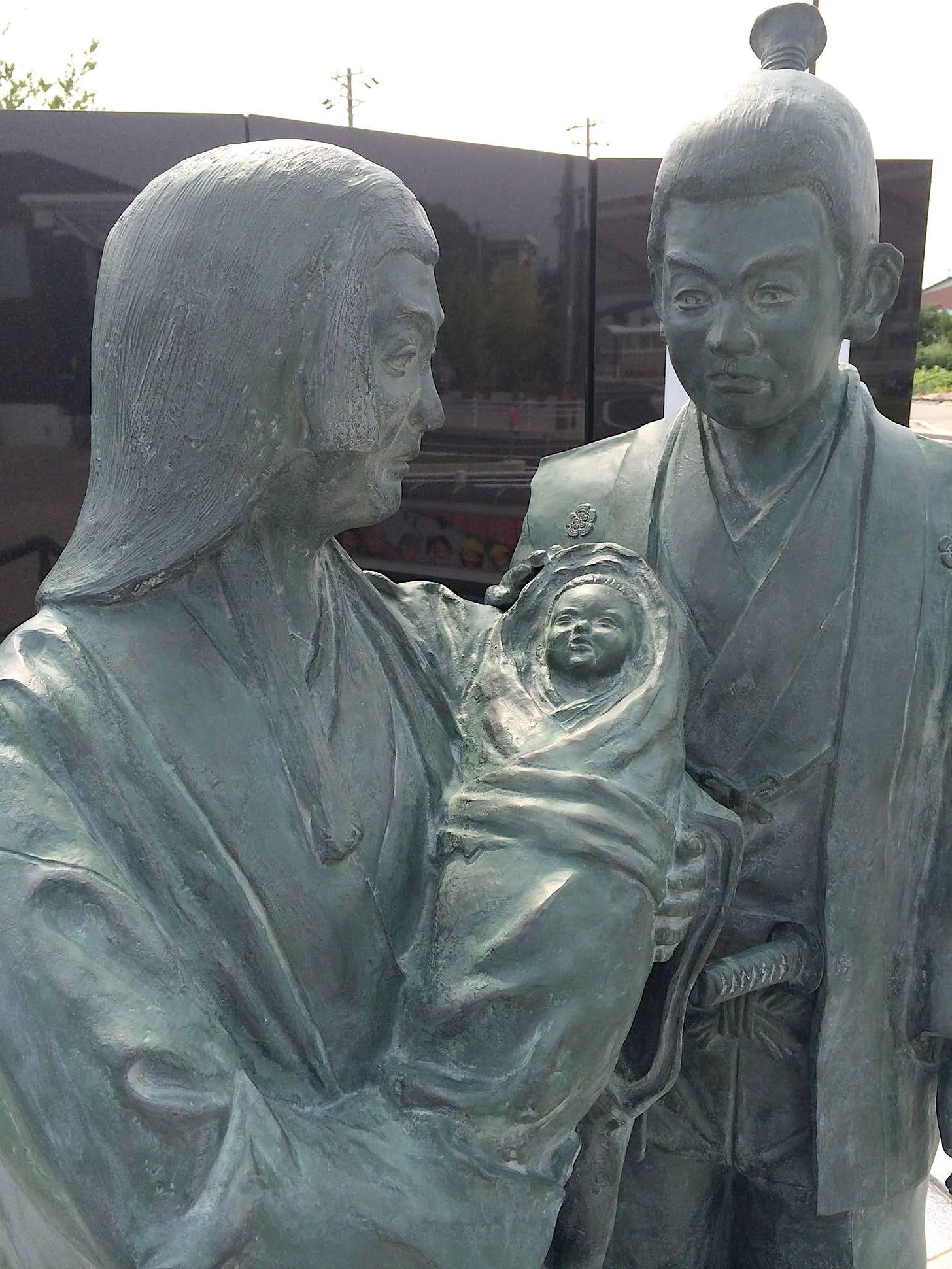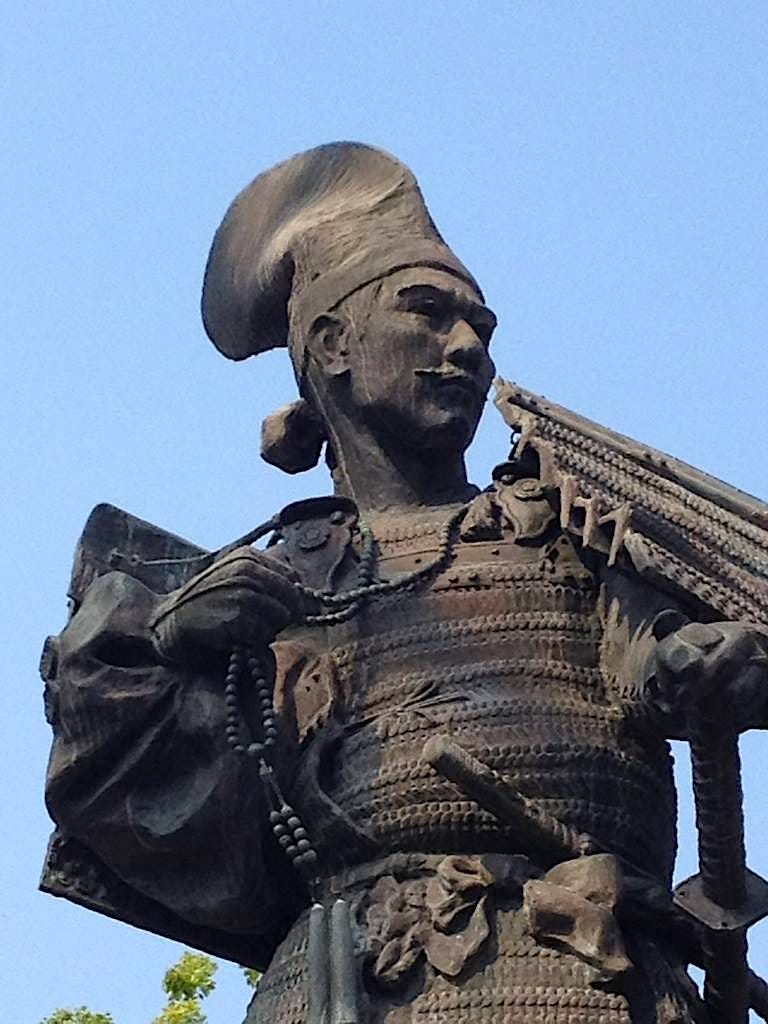Oda Nobunaga, the first of the three Unifiers of Japan, was born in Owari Province western Aichi Prefecture during the height of the civil strife that had rocked Japan for almost 400 years. The second son of Oda Nobuhide, the daimyo of Owari province, Nobunaga inherited his father’s expanding kingdom which he ruled from the clan’s well-fortified castle at Nagoya.
Nobunaga was an unruly youth. According to legend he was ill-mannered, untidy, impudent and failed to take his position seriously. In 1551 Nobunaga’s father died following a short illness, leaving the 15 year old as the head of the Oda clan and it’s rich, fertile domain. Dressed inappropriately for the funeral, he stormed into the temple late, and threw incense at the altar in full view of his family and retainers. Upon witnessing this rash and undisciplined conduct, many thought the noble Oda clan had reached the end of their line. One priest wisely saw the future potential in the young man.
Fool of Owari
Despite being known as the Fool of Owari - a ploy used by Nobunaga to hide his powerful military mind - with an army of an estimated 2,500 men, he defeated a force of 25,000 samurai led by Imagawa Yoshimoto in the Battle of Okehazama in 1560.
His reputation raised, Nobunaga established himself as both cunning and merciless later attacking and claiming Inabayama Castle, and in naming it Gifu, and enlarging it, he made it his primary headquarters. Through political marriages he secured affiliation with surrounding warlords and potential rivals before taking the province of Omi, present day Shiga Prefecture.
As his influence and power rose, Nobunaga was commissioned by the Emperor Ogimachi to quell the civil strife long plaguing Kyoto. In 1571 he fought the warrior priests of Mt. Hiei who had become dangerously politically powerful and militarily daring. Burning their temples and by mercilessly executing some 20,000 adherents of the militant Ikko-shu sect, Nobunaga soon rid the nation of one of its major problems.
He then turned his hand to putting an end to two and a half centuries of rule by the fault-ridden Ashikaga Shogunate, disposing of the 15th Ashikaga Shogun, Yoshiaki who had sided with Takeda Shingen in an effort to remove the Oda, Nobunaga instead exiled Yoshiaki to Wakae Castle in Kawachi, and at the Battle of Nagashino in 1560, Nobunaga and his ally Tokugawa Ieyasu oversaw the bitter defeat of the Takeda clan.
The Emperor bestowed the title of Gon-Dainagon on Nobunaga. Had he been born to a more historically influential family, he may have become shogun. Instead, Nobunaga rewarded himself by building a most splendid castle, Azuchi, on the shores of lake Biwa.
The Destroyer, The Creator
Nobunaga is often portrayed as a bloodthirsty psychopath. Nothing could be further from the truth. Indeed, while Nobunaga was ruthless and merciless to those who opposed him, he was kind to his vassals and the people under him. Nobunaga was responsible for creating the Rakuichi Rakuza free markets, and reduced taxes or offered incentives to ensure prosperity, not for himself or the warrior class, but for the people of his domains. He showed an elevated sense of hospitality, entertaining his guests with the greatest care. Even the foreign visitors of the day, such as the Portuguese missionary Frois found Nobunaga to be a strong willed, charismatic man with a great scope for knowledge, and despite the fear he put in his fellow samurai, a charming and most welcoming man nonetheless. Frois would be allowed into Nobunaga’s inner sanctum, and was made an honoured guest of Nobunaga while Frois researched his History of Japan.
Nobunaga was a creator, an innovator of castle construction, influencing the way castles came to be built, and the functions they served. It was Nobunaga who developed the stone wall techniques and the castle tower structures that came to epitomise samurai castles. He was the creator of the first specially built jokamachi, castle town, developed to protect and improve the living standards of the samurai and commoner residents. He designed and built special armor for his men, developed new battle strategies, and even created the Dohyo, the ring in which Sumo wrestlers fight to this day. He encouraged crafts, manufacturing and marketing amongst the commoners, with whom he would openly converse with.
As a statesman, Nobunaga looked to a prosperous future of peace. Admittedly he used violence at first, and then his fearful reputation to achieve this peace. While he continued to expand his influence, he was cut down in his prime.
Akechi Mitsuhide
Among the many gifted military men Nobunaga had surrounded himself with was Akechi Mitsuhide (1526-82). Nobunaga’s top three generals were Akechi Mitsuhide, Shibata Katsuie, and Toyotomi Hideyoshi. The most trusted was Mitsuhide. The stories of Nobunaga mistreating Mitsuhide verbally and physically are mostly unfounded, and appear to be fictions created in the Edo period and later in order to justify the actions at the Honno-ji. Ordered to bring reinforcements to the Seige of Takamatsu Castle waged by General Toyotomi Hideyoshi in the Chugoku region, Akechi reneged, and on June 22, 1582, inexplicably marched his 30,000 men to Kyoto where Nobunaga was lodged with some 70 guards in the Honno-ji Temple and attacked.
Hopelessly outnumbered, and wounded by arrow fire, Nobunaga retreated to the inner sanctum of the temple in anger and despair and setting it alight, committed seppuku.
Oda Nobunaga was 48 years old, and had conquered a third of the nation. Although the man responsible for his death would be killed less than two weeks later, it would be another of Nobunaga’s most able generals, Toyotomi Hideyoshi who would go on to usurp Oda power and complete his work in unifying the nation. Nobunaga’s influence is still felt to this day in modern Japan.





